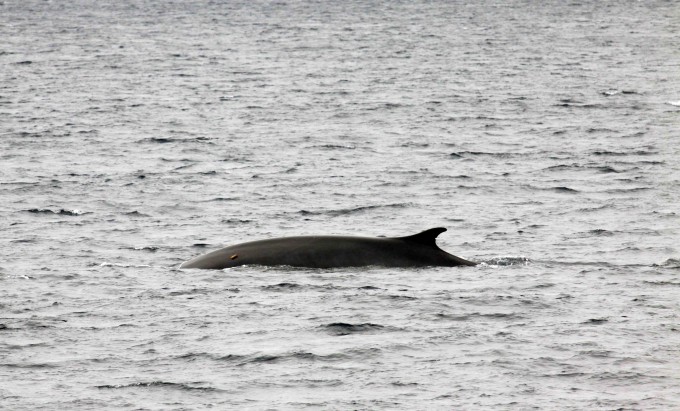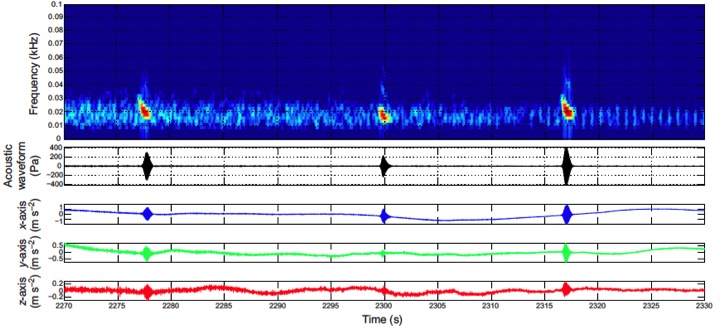Dr. Jeremy Goldbogen of Hopkins Marine Station (Stanford University) lead a team of SOCAL-BRS researchers in publishing a recent paper on new techniques to identify calling fin whales. This method involves using the accelerometers (movement sensors) in combination with the typical listening hydrophones to pinpoint whether a whale vocalization comes from the individual the tag is riding on. This is harder than it may seem given that the loud amplitude and low frequency nature of fin whale calls means other whales might be as easily detected on the tag as the focal individual it is on. The results have implications for the basic study of communication, responses to disturbance, and population assessments of these endangered animals. The reference, link, abstract, and Fig. 1 are given below (check out the paper for more details).

Goldbogen, J. A., A. K. Stimpert, S. L. DeRuiter, J. Calambokdis, A. S. Friedlaender, G. S. Schorr, D. J. Moretti, P. L. Tyack, B. L. Southall. (2014). Using accelerometers to determine the calling behavior of tagged baleen whales. The Journal of experimental biology, jeb-103259. <http://jeb.biologists.org/content/217/14/2449.abstract>
Low-frequency acoustic signals generated by baleen whales can propagate over vast distances, making the assignment of calls to specific individuals problematic. Here, we report the novel use of acoustic recording tags equipped with high-resolution accelerometers to detect vibrations from the surface of two tagged fin whales that directly match the timing of recorded acoustic signals. A tag deployed on a buoy in the vicinity of calling fin whales and a recording from a tag that had just fallen off a whale were able to detect calls acoustically but did not record corresponding accelerometer signals that were measured on calling individuals. Across the hundreds of calls measured on two tagged fin whales, the accelerometer response was generally anisotropic across all three axes, appeared to depend on tag placement and increased with the level of received sound. These data demonstrate that high-sample rate accelerometry can provide important insights into the acoustic behavior of baleen whales that communicate at low frequencies. This method helps identify vocalizing whales, which in turn enables the quantification of call rates, a fundamental component of models used to estimate baleen whale abundance and distribution from passive acoustic monitoring. KEY WORDS: Acceleration, Acoustics, Whale

